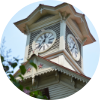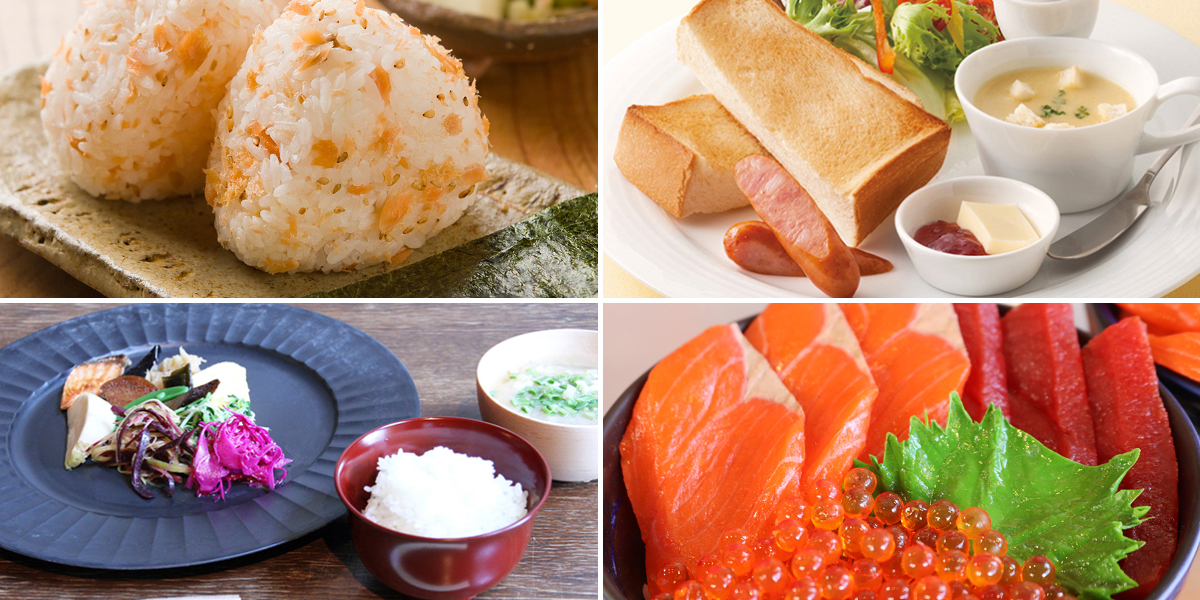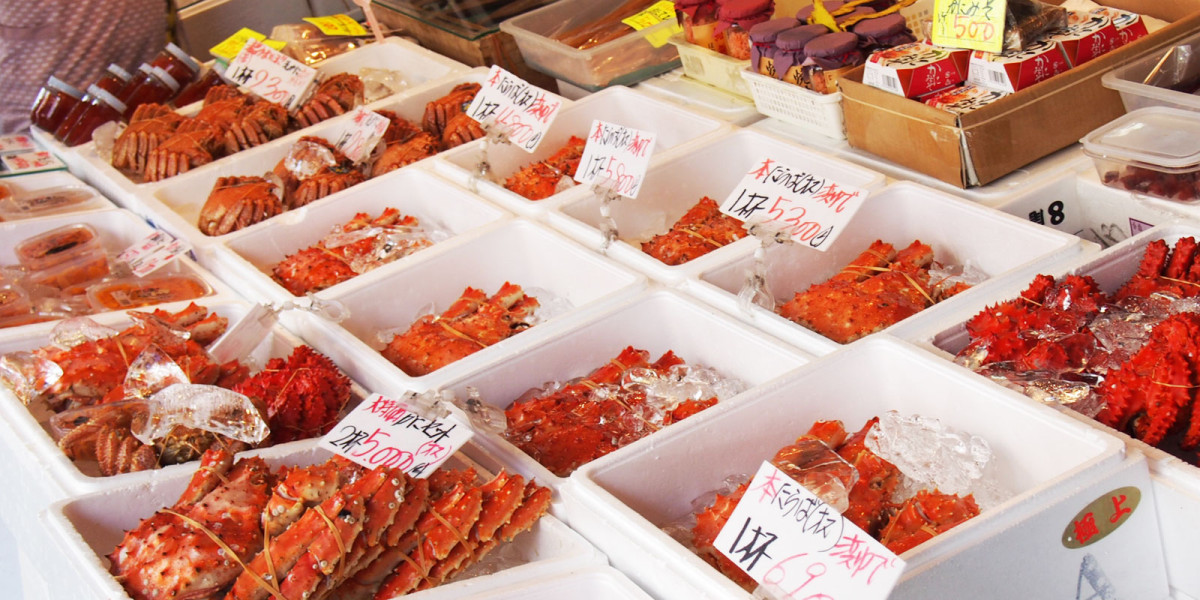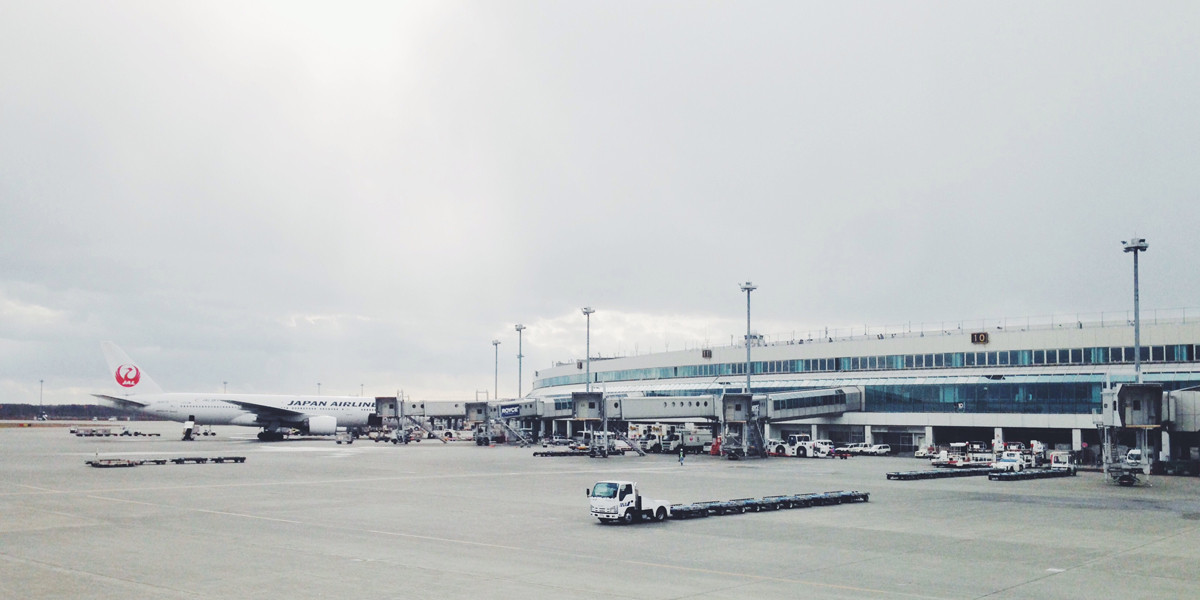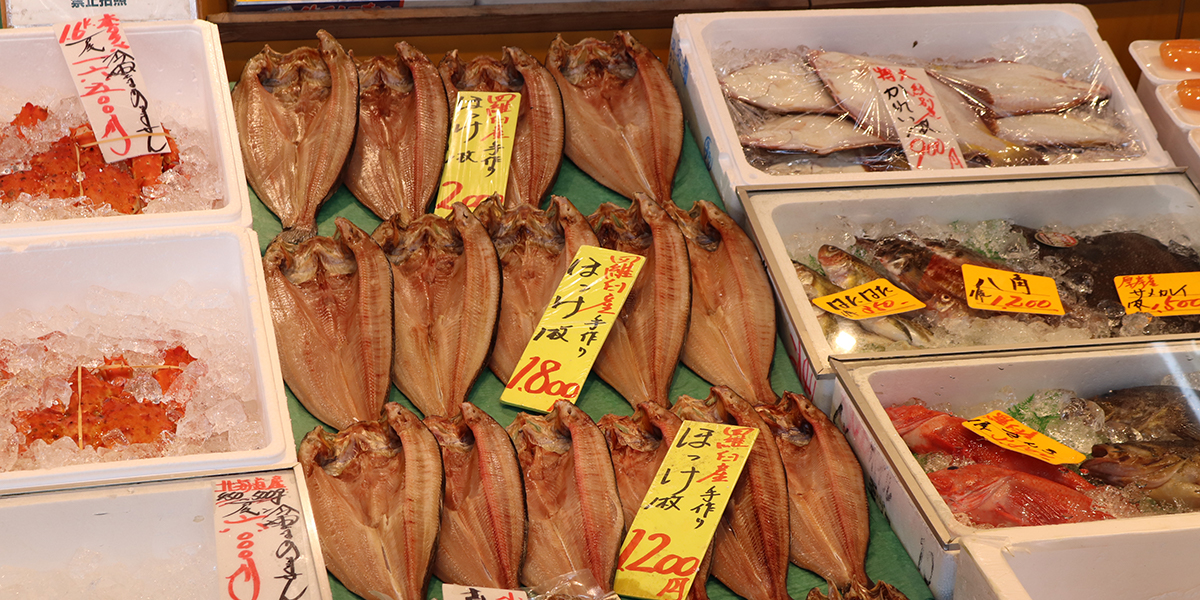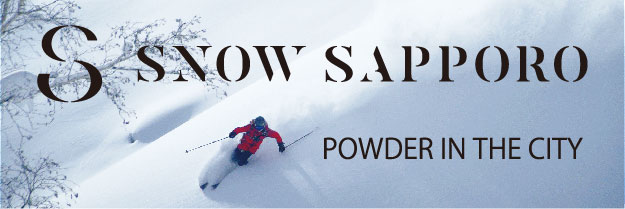
The Story of Sapporo Nanseki – The Soft Stone The 40,000 years journey of Sapporo Nanseki ー From catastrophic geological eruptions to things that look cute ー
Sapporo Nanseki, or soft stone, was formed from cooled and hardened pyroclastic flow that resulted from the explosive eruption of Shikotsu Volcano approximately 40,000 years ago.Since the Meiji era, Sapporo Nanseki has left a significant legacy not only as a construction material, but also in the history books of mining and transportation.Sapporo Nanseki, which is still being quarried today and often used for cute goods and stylish interior design, continues to evolve as a locally-sourced, locally-consumed resource.
Sapporo Nanseki caught the attention of the Kaitakushi, the emerging government at the time, for its strong resistance to fire.
About 40,000 years ago, Shikotsu Volcano burst into a massive eruption. Volcanic ash and pumice were spewed up into the air to a height of 30,000 meters and fell over a wide area, while widely, while pyroclastic flows streamed down its sides.It has also been deducted that there was so much materials erupting from the volcano, that they blocked the Ishikari River from flowing into the Pacific Ocean, and causing it to change course towards the Sea of Japan.The resulting molten rock that cooled and solidified is what is known as the soft stone, Sapporo Nanseki.The site of Shikotsu Volcano became a large depression that collected water over time, and later becoming the caldera lake, Lake Shikotsu.
A considerable amount of time has passed since then. During the Meiji era and early days of colonization, buildings were made of wood with little insulation. In Hokkaido, where it was common to light fires inside the home to keep warm, deadly fire hazards were a serious problem.Because of this, the Development Commission, with the advice of Horace Capron and other foreign advisors invited from the United States, turned its attention to Sapporo Nanseki as a fire-resistant building material.Stone buildings made of Sapporo Nanseki were constructed one after another, including storehouses, shops, public buildings, churches, and warehouses.Due to its high porosity and excellent insulation, it was ideal for use to construct storage facilities for vegetables and fruits, as well as breweries for sake, miso, and soy sauce.It was used in a variety of ways in different regions, such as onion warehouses in the East and North Wards, apple warehouses in Toyohira Ward, and silos in Atsubetsu Ward.
-

Horace Capron
(at the Hokkaido University Library) -

A building constructed using Sapporo Nanseki
(Sapporo Church of the United Church of Christ in Japan)
The Ishiyama area that developed alongside the soft stone.
Cutting Sapporo Nanseki was done by stonemasons until the introduction of chainsaws in the Showa era.During the early days, the stonemasons made grooves in the stone with a pickaxe, drove in wedges, and then raised and split the stone.It is rumored that they swung their pickaxes tens-of-thousands of times a day.The finishing process of removing bumps and indentations from the surface of an uncut stone, known as Notori, highlighted their outstanding skills and veteran experience.
In terms of transportation, it had a significant impact on the traffic in Sapporo as well.In order to transport Sapporo Nanseki, a horse-drawn railway was built in 1909 from Ishiyama to the area near Nishi 11-Chome on South 2nd Street.
The current National Route 230, commonly known as Ishiyama-dori, derives its name from the fact that it was a road where locally produced stones, including soft stones and hard stones from Ishiyama, were transported on.The Jozankei Railway, which connected Toyohira and Jozankei, began operating in 1918 (Taisho 7). The Ishikiriyama Station was established on this line in the Ishiyama area.The station building has now become the Ishiyama Promotion Association Hall, and along with the POST-O-KAN (formerly Ishiyama Post Office), which now houses a cafe and a soft stone shop, have become a hub for the local community.The interior of the POST-O-KAN Office features art made from Sapporo Nanseki.
-

Pickaxes were common tools used in stone cutting. -

POST-O-KAN (former Ishiyama post office)

Why does the goddess wear a blindfold?
The former Sapporo Court of Appeals building (now the Sapporo City Archives Museum) faces the west end of Odori Park.It was designated as an Important Cultural Property of Japan in December of 2020.Above the main entrance, there is a blind-folded Goddess of Justice, with reliefs of a scale and a sword on either side.The reason why the goddess is blind-folded is to represent the equality in law, free from differences in wealth or power.
-
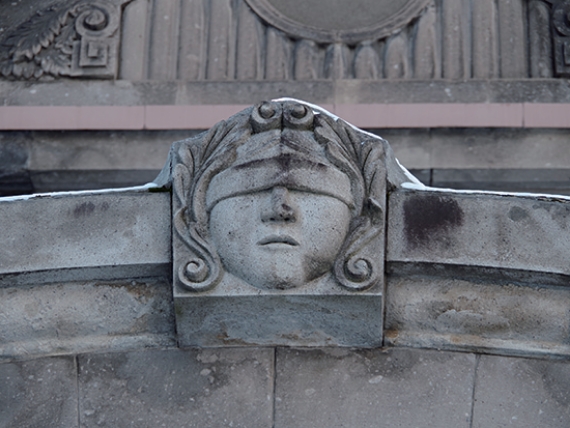
The face of the blind-folded goddess (located at the former Sapporo Court of Appeals Building)
Continuously evolving Sapporo Nanseki even to this day
Sapporo Nanseki has formed a deep emotional attachment with local citizens and has become an irreplaceable sight the city.Since buildings have become reinforced concrete, the number of soft stone buildings has decreased. However, according to a survey in 2015 (Heisei 27), there are still over 300 Nanseki buildings remaining, which are being utilized as restaurants, galleries, and more.
In December of 2020 (Reiwa 2), the Sapporo City Archives (formerly the Sapporo Court of Appeals Building, built in 1926) was designated as an Important Cultural Property of Japan.The beauty of the structure, combining soft stone and bricks, as well as the fusion of old and new construction techniques, such as the use of reinforced concrete on the second floor, were also highly valued.
Visiting the Ishiyama area, the Ishiyama Open Space has been developed into an art space where the mining site is reminiscent of ancient ruins. And in Monan Park, the oldest mining site is displayed outdoors as Sapporo Nanseki Plaza.You can purchase cute, aromatic stones and drink coasters made from Sapporo Nanseki, taking advantage of their excellent water absorption properties.40,000 years since the massive eruption that changed geological history.Sapporo Nanseki continues to evolve throughout its long journey.
-

The former Sapporo Court of Appeals building (Sapporo City Archives Museum) -

Ishiyama Open Space

Torii (the gateway to a sacred place) and Komainu (guardian dogs)
are also made of soft stone.
Ishiyama Shrine
The Ishiyama district in South Ward, is known for its Sapporo Nanseki production. Today, there are still many soft stone buildings in the area. At the Ishiyama Shrine, the Torii gate, Komainu guardian dogs, and sculpted lanterns are all made of the soft stone.There are also many stone monuments in the local precincts that tell of their history.The shrine is beloved by the community and home to many annual local events.
-
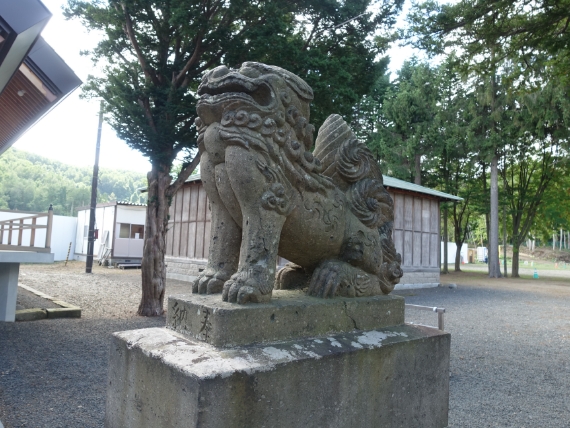
Komainu (guardian dog statues) made of Sapporo Nanseki.
| Name of the cultural property | Status of Designation | Location |
|---|---|---|
| Ishikari River | Not designated | North Ward, East Ward |
| Takagi Shouten (Stone Warehouse) | Sapporo landscape assets (No. 25) | 4 Chome-28 Kita 7 Johigashi, Higashi Ward |
| Akino Sohonten Pharmacy | Sapporo Furusato Culture 100 Selections (Buildings) No. 7 | 1 Chome Minami 1 Jonishi Chuo Ward |
| The former Numata Family Warehouse (currently the Miyataya Coffee Shop Mamezou Higashi-Naebo Branch) | Sapporo landscape assets (No.30) | 2 Chome-11-18 Higashinaebo 5 Jo, Higashi Ward, Sapporo |
| The warehouses around Shinoro Station | Sapporo Furusato Culture 100 Selections (Buildings) No. 30 | 7 Chome Shinoro 3 Jo Kita Ward |
| Hakko Gakuen Museum (former Yoshida Livestock Barns and Stone Silos) | Sapporo Furusato Culture 100 Selections (Buildings) No. 28, Sapporo landscape assets (No.9) | 1-12~13 Tsukisamu Higashi, Toyohira-ku |
| Sapporo Agricultural College’s Farm No. 2 Food-processing Plant | Nationally Designated Important Cultural Property | 7 Chome Kita 18 Jonishi Kita Ward |
| Sapporo Agricultural College’s Farm No. 2 Engine Room | Nationally Designated Important Cultural Property | 7 Chome Kita 18 Jonishi Kita Ward |
| Sapporo Agricultural College’s Farm No. 2 Silo | Nationally Designated Important Cultural Property | 7 Chome Kita 18 Jonishi Kita Ward |
| Kondo Ranch (Stone Silo) | Sapporo Furusato Culture 100 Selections (Buildings) No. 28 | 694 Shinkawa |
| Former Baba Farm silo | Sapporo Furusato Culture 100 Selections (Buildings) No. 36 | 3 Chome Atsubetsuchuo 2 Jo Atsubetsu Ward |
| Former Uno Farm silo | Not designated | 5 Chome-1 Kaminopporo 1 Jo Atsubetsu Ward |
| Sapporo Church of the United Church of Christ in Japan (Former Sapporo Methodist Church Hall) | National Registered Tangible Cultural Property, Sapporo Furusato Culture 100 Selections (Buildings) No. 4, Sapporo landscape assets (No.7) | 1 Chome Kita 1 Johigashi Chuo Ward |
| Guardian Angels Cathedral, Sapporo Priest’s Residence Cathedral Hall. | Sapporo Furusato Culture 100 Selections (Buildings) No. 3, Sapporo landscape assets (No.23) | 6 Chome Kita 1 Johigashi Chuo Ward |
| Tools used for stone cutting included pickaxes | Not designated | |
| Ishiyama Dori (National Highway 230). | Not designated | Chuo Ward, South Ward |
| Former Ishikiriyama Station (now Shiyama Promotion Association Hall) | Sapporo landscape assets (No.10) | 3 Chome-1-30 Ishiyama 1 Jō, Minami Ward |
| Former Ishiyama post office (now POST-O-KAN ) | Sapporo Furusato Culture 100 Selections (Buildings) No. 41, Sapporo landscape assets (No.5) | 3 Chome-1-26 Ishiyama 2 Jo, Minami Ward |
| Ishiyama Shrine | Not designated | 254 Ishiyama, Minami Ward |
| The Former Sapporo Court of Appeals Building (Sapporo City Archives Museum) | National Designated Important Cultural Property, Sapporo Furusato Culture 100 Selections (Buildings) No. 18 | 13 Chome Odorinishi Chuo Ward |
| Ishiyama Open Space | Not designated | 78-24 Ishiyama, Minami Ward |
| Ishiyama Soft Stone Quarry Site | Sapporo Furusato Culture 100 Selections (Ruins) No. 68 | 78 Ishiyama, Minami Ward |
| Monami Park | Sapporo Furusato Culture 100 Selections (Ruins) No. 67 “Legend of the Oiran River” | 9-11 Chome, Kawazoe in Minami Ward, and 7-8 and 12 Chome, Kashiwaoka in Makomanai (park area). |
| Sapporo Nanseki accessories | Not designated |
*Some of the above lists are not open to the public.
*The Sapporo Nanseki culture, which supported the industry and life of Hokkaido, has been selected as a Hokkaido Heritage under the name “Sapporo Soft Stone”.
Check out all the cultural properties in the story!
-
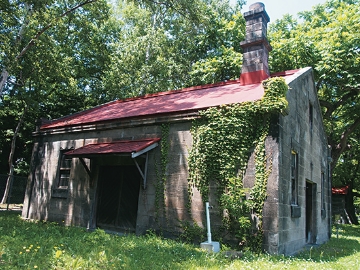
Hokkaido University School of Agriculture Second Farm
The original form of the Hokkaido University Farm was the Agricultural Garden, established almost at the same time as the opening of the Sapporo Agricultural College in 1876 (Meiji 9).
It was created under the leadership of Dr. Clark, the first vice principal.
The Second Farm still retains the model dairy farm as it was back then, which was tailored to the climate and conditions of Hokkaido.
The silo made of Sapporo Nanseki was constructed in 1912 (Taisho 1).
It is said to be the oldest silo in Hokkaido.7 Chome Kita 18 Jonishi, Kita Ward, Sapporo
Viewing time is from 10:00am to 4:00pm.
Closed on the 4th Monday of every month and during the winter season (from November 4th to April 28th).
-
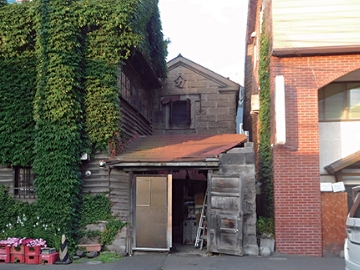
Takagi Shouten (Stone Warehouse)
A wooden shop built around 1932 (Showa 7).
The enamel signs hanging on the walls and stone warehouses give off a certain charm and evoke the atmosphere of the Showa era.
A building designated as Sapporo landscape assets No. 25. It is a private residence and is not open to the public.4 Chome-28 Kita 7 Johigashi, Higashi Ward, Sapporo
-
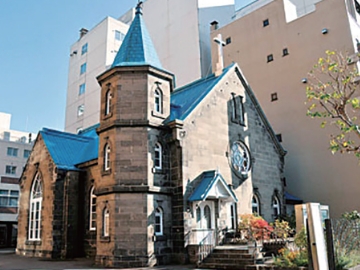
Sapporo Church of the United Church of Christ in Japan
The current hall, built in the Romanesque style, was constructed in 1904 (Meiji 37) using Sapporo Nanseki.
The church faces the Sosei River, with its historic appearance blending into the city’s landscape.
It is designated as Sapporo landscape assets No. 7.
Visits are limited to the exterior of the building only.1 Chome Kita 1 Johigashi, Chuo Ward, Sapporo
-

Guardian Angels Cathedral, Sapporo Priest’s Residence Cathedral Hall.
A unique building that combines a Sapporo Nanseki exterior with a traditional Japanese tile roof.
The historic Catholic church in Sapporo, along with another adjacent church, blends in with the urban landscape and emanates an exotic atmosphere.
If there are no church events, it is open to the public.
Please obtain permission in advance before visiting.6 Chome Kita 1 Johigashi, Chuo Ward, Sapporo
-
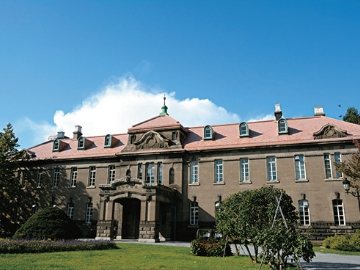
The Former Sapporo Court of Appeals Building (Sapporo City Archives Museum)
The building was constructed in 1926 (Taisho 15) as the Sapporo Court of Appeal and opened as the Sapporo City Archives Museum in 1973 (Showa 48). It is said to be the largest existing building made of Sapporo Nanseki. At the front of the building, the upper part depicts a blind-folded Goddess of Justice, with her scales representing fairness and her sword symbolizing justice. Visitors can also explore the “Oba Hiroshi Memorial Room” and the “Criminal Courtroom Exhibition Room” within.
13 Chome Odori-nishi, Chuo Ward, Sapporo
The viewing hours are from 9:00am to 7:00pm.
Closed on Mondays (if it is a national holiday, the following day), year-end and New Year holidays.
-
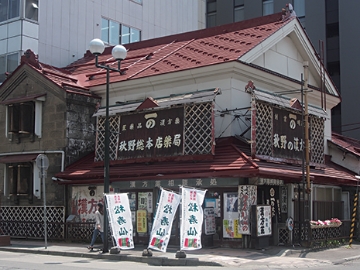
Akino Sohonten Pharmacy
The pharmacy, attached to a stone warehouse, was built in 1901 (Meiji 34). It features a gabled roof and a white-walled, storehouse-style construction.
It is one of the few remaining shops in Sapporo that still retains a Meiji era atmosphere.
As it continues to operate as a pharmacy even today, only patients and customers needing to use it can enter.1 Chome Minami 1 Jonishi Chuo Ward, Sapporo
-
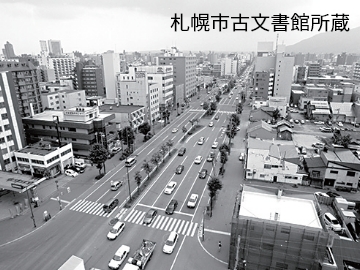
Ishiyama Dori (National Route 230).
It is said that the road construction began in 1870 (Meiji 3) when the monks of the Higashi Honganji Temple started excavating the section between Yamahana and Nakanosawa.
The excavation of Sapporo Nanseki began in 1872 (Meiji 5) in the Kataishiyama and Ishiyama areas. At the time, horse-drawn carriages and wagon trains were used to transport the quarried stones along the road, which led to it being coined Ishiyama-dori, directly translated as Stone Mountain Street.
Today, it is still used by many cars, trucks, and bikes as a major road that leads right into the heart of downtown Sapporo.Sapporo Chuo Ward and South Ward (National Route 230)
-
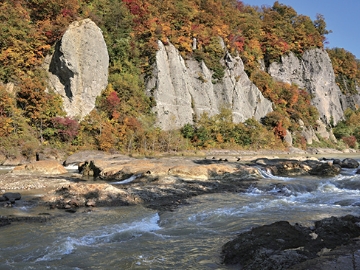
Monami Park
This is the site of the former Sapporo Nanseki quarry. The rock wall at the Sapporo Nanseki Plaza in the park still retains the traces of the initial quarrying of soft stone.
In the plaza, there is an explanatory panel that shows the process of stone cutting. Stones corresponding to the explanation are also displayed together.
For those interested in the history and processes, visitors can gain a much deeper understanding of Sapporo Nanseki.Sapporo Minami-ku Kawazoe 9-11 Jo 1-Chome, Makomanai Kashiwaoka 7, 8, 12-Chome.
Winter closure from late November to mid-April.
-
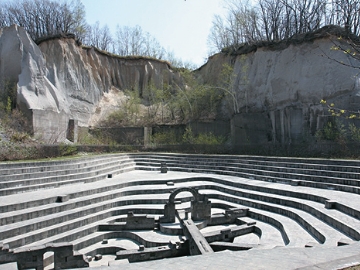
Ishiyama Open Space, Ishiyama Soft Stone Quarry Site
The Ishiyama Open Space was created by repurposing the vast Sapporo Nanseki stone quarry site into a public park.
There are observation terraces, tennis courts, and other recreational facilities in the North Block, serving as a place to enjoy and relax.
On the other side, in the South Block, the impressive beauty of the steep rock formations really stands out.
The giant works of art and stone plazas made of Sapporo Nanseki gives off an ambience of being in a foreign land.
Various areas have been specifically designed, so the entire park can be enjoyed as a massive art exhibition.78 Ishiyama, Minami Ward, Sapporo
-
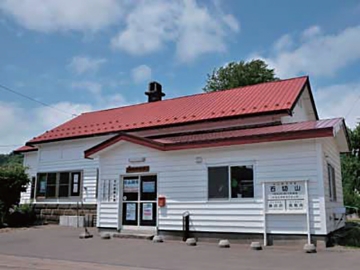
Former Ishikiriyama Station (now shiyama Promotion Association Hall)
The former Jozankei Railway, which opened in 1918 (Taisho 7), connected Shiroishi and Jozankei via trains.
This building was constructed to become the Ishikariyama Station in 1949 (Showa 24).
The former Ishikiriyama Station is the only surviving station building of the now-closed Jozankei Railway.
Later, it came under the jurisdiction of Sapporo city and was leased to the Ishiyama Promotion Hall Operating Committee.
The building is currently being used as an office, so please obtain permission before visiting.3 Chome-1-30 Ishiyama 1 Jo, Minami Ward, Sapporo
-
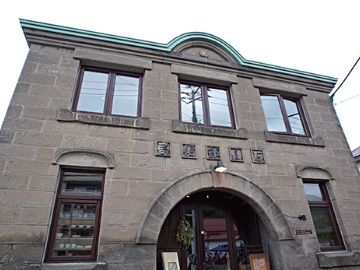
Former Ishiyama Post Office
This building is the former Ishiyama Post Office, where visitors can fully appreciate the textures and charm of Sapporo Nanseki.
In April 2019 (Heisei 31), it opened as a space called “POST-O-KAN” with a shop and a cafe.
In the cafe gallery, panel photos related to Sapporo Nanseki from the Meiji to Showa eras are on display.
The store sells cute goods such as aroma stones and magnets made of soft stone.3 Chome-1-26 Ishiyama 2 Jo, Minami Ward, Sapporo
Closed on Tuesdays and Wednesdays.
-
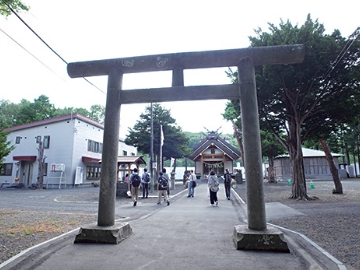
Ishiyama Shrine
The Ishiyama Shrine uses Sapporo Nanseki for the construction of its torii gate, komainu guardian dogs, and sculpted lanterns within.
In 2015 (Heisei 27), when the main hall of the shrine was rebuilt, the torii gate was left as it was.
Feel the historic passing of time as you pass through the gate.
It is also the only shrine in South Ward that has a resident priest. Visitors can also purchase cute charms here for good luck!254 Ishiyama, Minami Ward, Sapporo
-
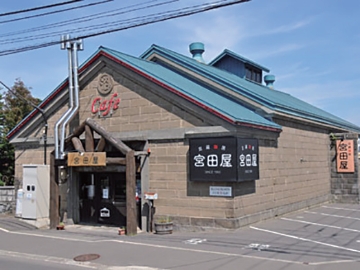
Former Numata Family Warehouse
The warehouse was built of stone using Sapporo Nanseki.
This stone warehouse, built in today’s Higashi Ward, was used to store onions when its cultivation was thriving during those times.
It has been renovated and is currently operating as a coffee shop called Miyataya, Higashi-Naebo Branch.
Only customers of the cafe are allowed inside.2 Chome-11-18 Higashi-naebo 5 Jō, Higashi Ward, Sapporo
-
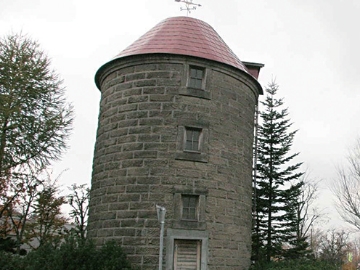
Former Baba Farm Silo
The silo was built in 1927 (Showa 2) on the farm of Mr. Kazuichiro Baba for livestock use and dairy processing.
It was 9 meters tall and had a diameter of 6.15 meters, making it the largest silo of its time when it was built.
Sapporo city later acquired it.
Despite the construction of public housing in the area, the silo has been preserved as a valuable historical heritage and became an iconic symbol.
Visitors can only view the exterior.3 Chome Atsubetsuchuo 2 Jo, Atsubetsu Ward, Sapporo
-
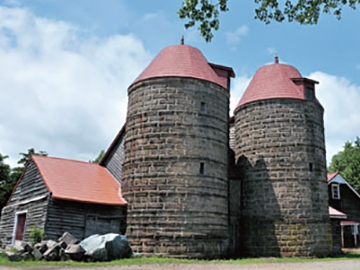
Hakko Gakuen Museum
Hakko Gakuen was a school which was established in 1927 (Showa 2) for farming and cultivation.
The Agricultural Museum, that archives related materials, is housed in a building that was once used as a sheepfold.
There are also other facilities on the grounds, such as a stone silo and a Western-style building (now the Kurilin Memorial Hall).
Visitors who want to see inside, please contact Hakko Gakuen to obtain permission in advance.12-13 Chome Tsukisamu Higashi 1 Jo, Toyohira Ward, Sapporo
-
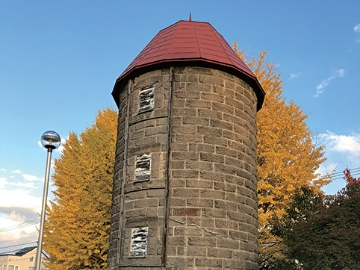
Former Uno Farm Silo
This silo was constructed of Sapporo Nanseki on the former Uno Farm.
Located nearby and surrounded by trees is a monument that marks the “birthplace of the dairy cooperative.”
In addition, to the former Accounting Office building, the idyllic and relaxed scenery creates a calm atmosphere.
It is currently not open to the public, but can be viewed from outside of the premises.5 Chome-1 Kaminopporo 1 Jō, Atsubetsu Ward, Sapporo
Take a break at a café

-
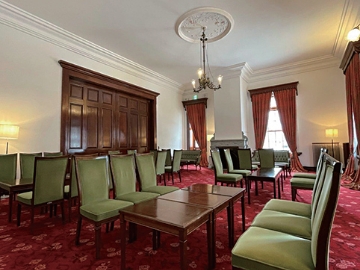

The Cafe Harunire is located in the Toyohirakan.
1-20 Nakajimakōen, Chuo Ward, Sapporo, Hokkaido 064-0931
The Cafe Harunire is located in the Toyohirakan.
Why not take a break and enjoy some delicious baked sweets and original coffee at this elegant cafe after touring the facility?
Available at the first-floor dining area from 11:00am to 3:00pm.
011-211-1951
-
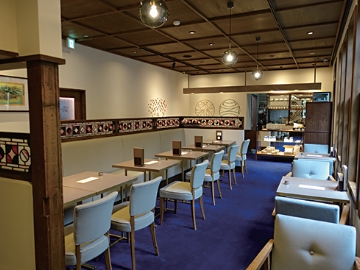

SIAF Lounge (located inside the Former Sapporo Court of Appeals Building )
1F, Sapporo Shiryokan (Former Sapporo Court of Appeal ) 13 Chome Odorinishi, Chuo Ward, Sapporo, Hokkaido
The lounge, located on the first floor of the Former Sapporo Court of Appeal, allows visitors to freely read books and materials related to the Sapporo International Art Festival (SIAF), an event held once every three years that showcases the latest creative works from around the world.
Take a break with a sweet cake and an original coffee blend while visiting the museum!
011-252-9360
-
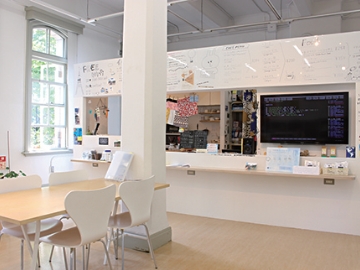

Nagayama Rest (located in the former Nagayama Takeshiro Residence and the former Mitsubishi Mining Company Dormitory)
6 Chome Kita 2 Johigashi, Chuo Ward, Sapporo, Hokkaido
Nagayama Rest is a coffee shop, fashioned in a Western and Japanese eclectic style, just like the former Nagayama Takeshiro Residence.
The cafe offers retro Western-style dishes and Instagram-worthy desserts.Enjoy the history and culture of a bygone era in a space that feels like a time warp into the past!
011-215-1559
Check the website for opening hours.
Recommended sightseeing spots around cultural heritage!
-
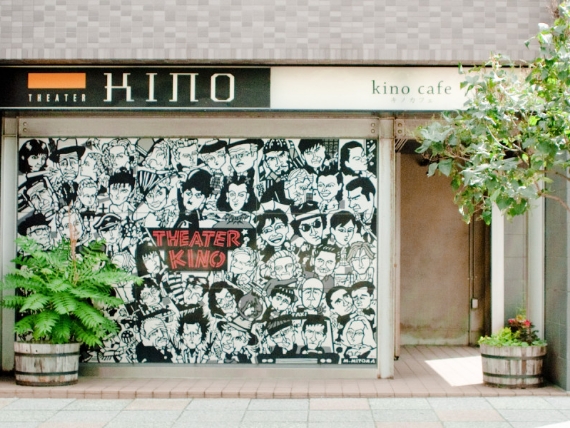
Theater Kino
Other/Susukino
This theater opened in 1992 with 29 seats as a movie theater that is funded by the citizens of Sapporo. In 1998, it relocated to its current location and now has two theaters, with 63 seats and 100 seats respectively. There is a top-of-the-line sound system in place and Hokkaido-grown diatomaceous soil is used on the walls to keep the air clean. The theater’s policy of only showing films that Hiromi Nakajima, the manager, personally views and selects, has not changed since its opening. It is now known nationally as a theater that shows films that are high in quality, even if not distributed by one of the big film distribution companies. Hiroshi Nakajima, the Representative, is committed to creating a rich film and video culture in Sapporo and as part of his activities, he holds “Kino Film Lectures” and “Fim Production Workshop for Kids” every year.
Minami 3-jo Grand Bldg 2F, Minami 3-jo Nishi 6-chome 3-2, Chuo Ward, Sapporo
-
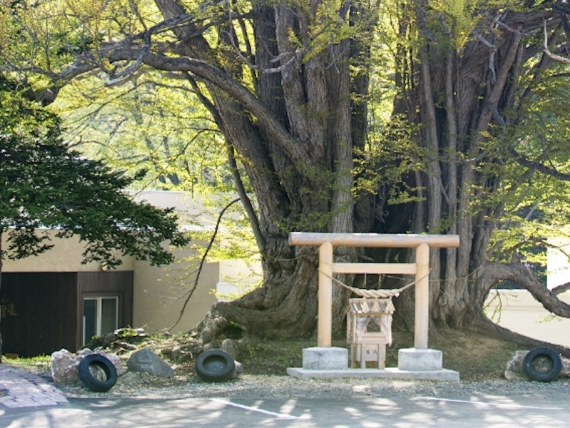
Koganeyu Hot Springs
Hot spring/Minami Ward
“Koganeyu Hot Springs” is located approximately 4km closer to downtown Sapporo than the Jozankei hot spring region at the foot of the mountains by the Toyohira River. The area has two inns, the “Yumoto-koganeyu” and the “Yumoto Koganeyu-onsen Matsunoyu.” Both inns allow visitors to use its baths without staying overnight. The area’s symbol is the 700-years-old katsura tree, at the foot of which Miizujouzan, who opened the Jozankei hot springs, is said to have taken a nap and was visited by a tree spirit, who showed him the miraculous hot spring. A fudo-son called the “Katsura Fudo” is enshrined in the hollow of the tree’s base. Autumn foliage and the Ainu Culture Promotion Center (Sapporo Pirka Kotan), which is within walking distance, are also must-sees.
Koganeyu, Minami Ward, Sapporo
https://www.sapporo.travel/spot/facility/koganeyu_hot_springs/
-

café gakeno-ue (café on the cliff)
Café/Jozankei
Overlooking the babbling Shirai River, café gakeno-ue, as the name suggests, is a café on the cliff. This little ten-seater café, consisting of a marine shipping container fastened to the bedrock, is a space that is not so much “on” the cliff, but rather “coming out” from the cliff. What you can enjoy at the shop is the taste of siphon coffee and homemade cakes, and the beautiful view of the Jozankei valley from the window, likened to a picture frame. There is a glass table between the special seats by the fully-glazed back wall, and when you sit down it feels like a café in the sky! Wild animals may also make an appearance on the other side of the valley that continues to the deep mountain. There are seasons of greenery and red autumn leaves, but the time right after it opens in winter, when the snow is piled up, is also truly special.
Jozankei 567-36, Minami Ward, Sapporo
-
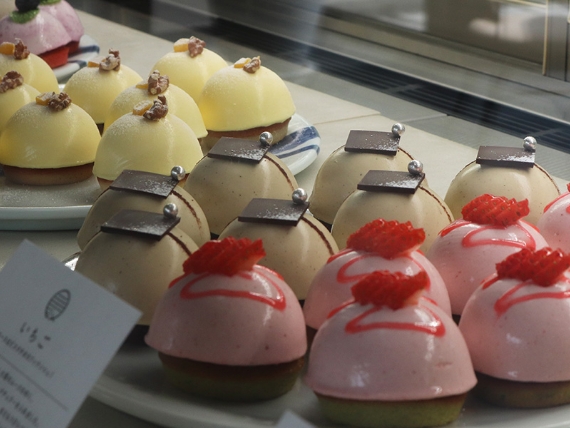
Sakano ueno monaka
Café/Jozankei
Jozankeionsennishi, 3 Chome−105, Minami Ward, Sapporo
-
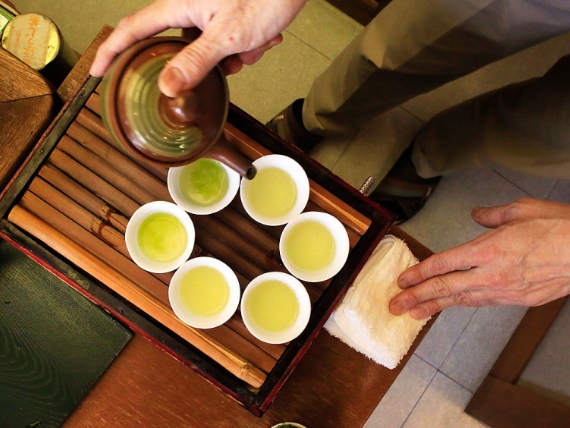
Gyokusuien
Café/Near Nijo Market
Founded in 1933, Gyokusuien is a Japanese tea shop located close to Sapporo’s Nijo Market. There is an eat-in space where you can enjoy quality Japanese teas from all over the country and original sweets served with ice cream made with mature matcha tea. The ochazuke, made with deer meat and Hokkaido rice is also popular. Green tea is rich in vitamins and also has fatigue-relieving effects, so there are many regular customers from the neighboring office district. You may also see foreign tourists enjoying sampling the teas and enthusiastically listening to explanations provided by a Japanese tea instructor. The Japanese tea and sweets can also be taken out, and there is also a popular service whereby if you bring a flask with you (350 to 500ml), they will fill it with freshly made Japanese tea for ¥250.
Minami 1-jo Higashi 1-chome 1, Chuo Ward, Sapporo
-
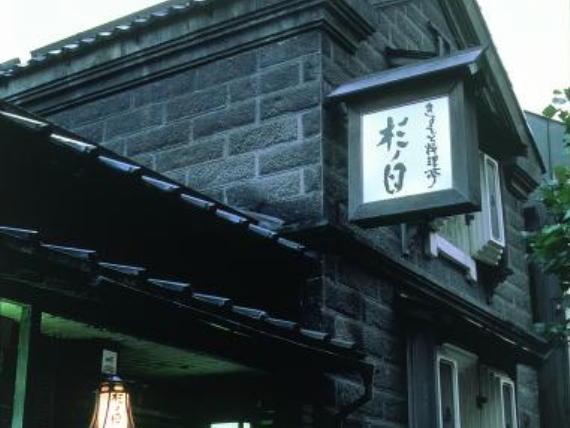
kyoudoryouritei suginome
Gourmet/Chuo Ward
South5 West5, Chuo Ward, Sapporo
-
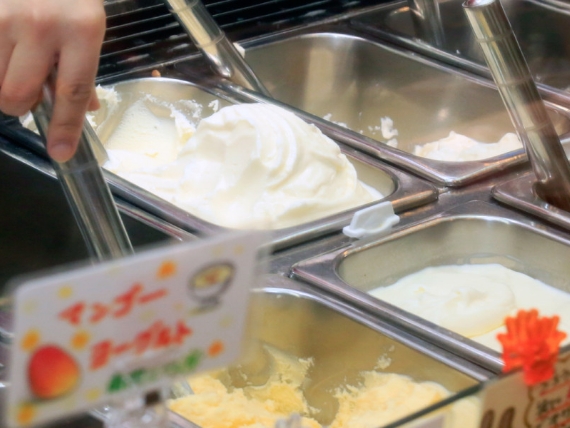
Gelato Sapporo Karinju
Gourmet/Minami Ward
Gelato Sapporo Karinju is a shop in the south of Hokkaido City which sells additive-free gelato made with Hokkaido milk and natural ingredients. From classics such as vanilla and sesame, to limited items made using seasonal fruits, each day there are ten flavors chosen from among about 100 varieties on sale at the shop, which is joined to the local sake brewery Senmaru. The gelato unique to a liquor store, made using Awamori or wine, is also popular (please avoid if you are driving). The gelato uses no flavorings or preservatives, and everything is made by hand in the shop. Three types—cream, yogurt and sherbet—can be ordered in cones, waffles or cups. Many repeat customers drop by on their way to and from Sapporo Art Park, and it is also perfect for a drive or touring.
Gelato Sapporo Karinju
https://www.sapporo.travel/gourmet/shop/gelato-sapporo-karinju/
-
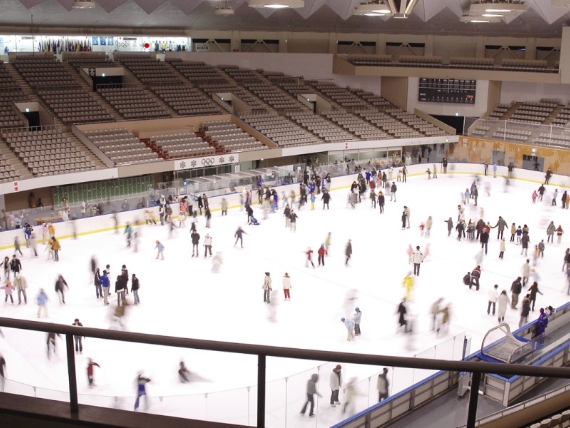
Makomanai Park
Park/Minami Ward
Makomanai Park was the main venue used in the 1972 Sapporo Olympics. “The Makomanai Sekisui Heim Ice Arena” is where the figure skater Janet Lynn charmed the people with her spectacular performance and it is opened to the public (admission fee required) during the winter months. There is a 3km circular course in the park, and is populated with runners and joggers during the summer and cross country skiers during the winter. On the 82ha park area, there are approximately 50,000 natural trees and a tree as old as 135 years. It is also a popular destination for visitors who want to enjoy viewing the foliage and the cherry blossoms. Dogtooth violets bloom in abundance in May and this is of the largest scale to grow naturally in a city park.
Makomanai-koen 3-1, Minami Ward, Sapporo
-
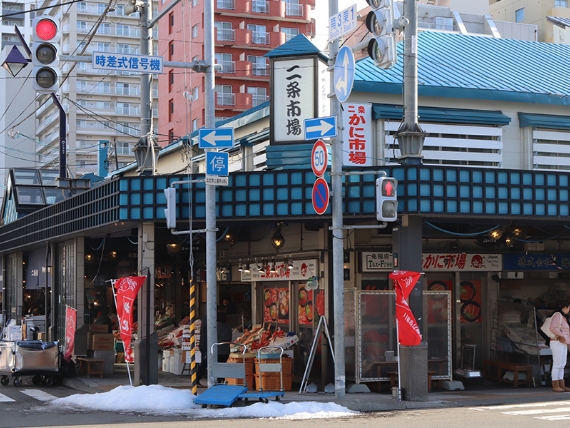
Nijo Fish Market
Shop/Near Nijo Market
Nijo Fish Market is said to have developed in the early Meiji Period (1868 – 1912), when fishermen from Ishikari Bay started selling fresh fish there. The market originally spanned the Sosei River, running from Nishi 1-chome to Higashi 2-chome. Over time, the number of bars and greengrocers in the area began to increase, laying the foundations for today’s Nijo Fish Market. The market continues to serve local residents’ culinary needs to this day, and is also popular with visitors to the city thanks in part to its central location.
Minami 3-jo ~ Higashi 1-chome, Chuo Ward, Sapporo
-
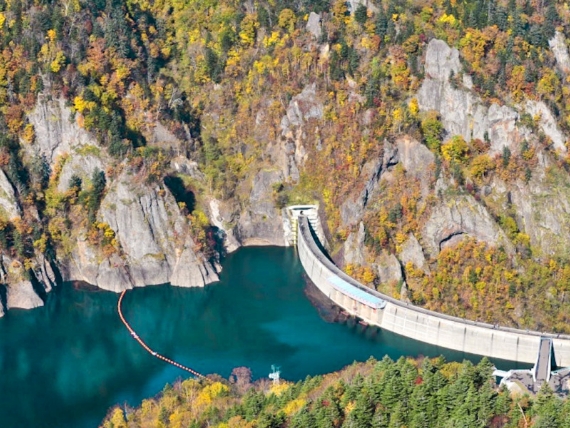
Hoheikyo Dam
Other/Jozankei
This arch concrete dam, which is 102.5 meters tall, was completed in 1972 to utilize the Toyohira River, located in the Minami-ku area of Sapporo, for hydroelectricity and to control its flooding. The resulting reservoir was named Jozan Lake and it holds approximately 30 times the volume of Sapporo Dome in water. Hoheikyo Dam is located inside Shikotsu Toya National Park, and the 2km area between the dam entrance and the dam is a designated environmental protection area and no cars, motorcycles, or bicycles are allowed in it. The dam can be accessed by foot or electric bus. Steep rock slopes surround the dam to create a picturesque sight. The dam is dramatically discharged for sightseeing between June and October from 9:00 to 16:00 and it is famous as a place for foliage viewing.
Jozankei 840-banchisaki, Minami Ward, Sapporo
-
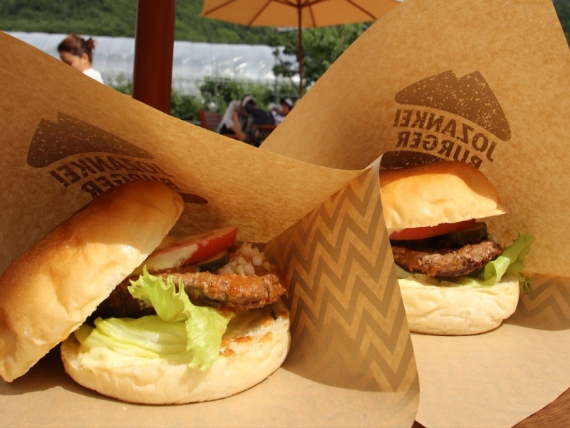
Jozankei Farm
Other/Jozankei
Jozankei Farm is an orchard located near the Hoheikyo Dam in Sapporo. Starting with strawberries in June, and followed by fruits such as cherries and grapes, visitors can experience seasonal fruit picking until early November. The orchard also has a well-loved fish pond where children can try fishing and is always bustling with Sapporo locals of all ages. The paths are paved and wide enough to accomodate fruit picking visitors with wheelchairs or baby strollers. After a long walk, quench your thirst with the underground water springing from the valley of Mt. Muine. Food services available. Try the popular Jozankei Burger or genghis-khan . We recommend getting off the bus midway to stop by at the Jozankei Onsen, a classic Sapporo tourism spot.
Jozankei 832, Minami Ward, Sapporo
https://www.sapporo.travel/spot/facility/jozankei-waiwai-farm/
-
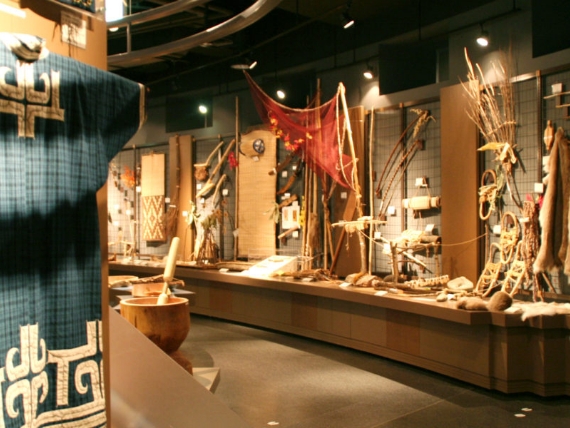
Ainu Culture Promotion Center (Sapporo Pirka Kotan)
Museum/Jozankei
This culture center teaches visitors about the lifestyle, history, and art of the Ainu people, the indigenous people who settled in the north and developed a unique culture. This facility, the first of its kind in Japan to focus on original inhabitants, allows visitors to see, touch, and experience first-hand numerous traditional Ainu craftworks made by Ainu artisans. In the Ainu language, “Sapporo Pirka Kotan” means “beautiful village in Sapporo.” The exhibitions include some 300 items such as traditional clothing and tools, which visitors are allowed to hold in their hands. The Ainu Association of Hokkaido Sapporo Branch also holds workshops that teach Ainu embroidery and how to make the traditional Ainu musical instrument Mukkuri at the center (reservations and fees required; contact Ainu Association of Hokkaido Sapporo Branch at 011-596-1610).
Koganeyu 27, Minami Ward, Sapporo
https://www.sapporo.travel/spot/facility/sapporo-pirka-kotan/
-
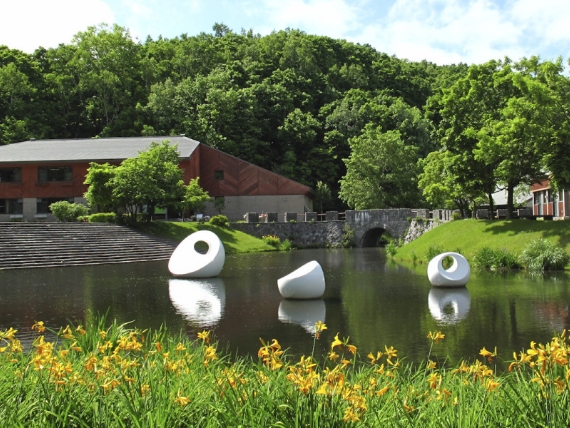
Sapporo Art Park
Museum/Minami Ward
Sapporo Art Park is an art complex featuring a museum, art studio, outdoor stage, and music practice rooms. The Sapporo Art Park Museum holds various exhibitions and the Outdoor Museum allows visitors to enjoy art as they experience the various seasons. There are also various craft studios, such as those for woodworking and glassmaking, in the forest where visitors can experience craft making in various forms of media. There are also places to practice theatrical acting and music, as well as facilities for overnight stays. Sapporo Art Park is not just a place to observe art, but also a place to create art. Park’s buffet-style restaurant “Gochisou Kitchen Hatake-no-haru” and café reopened in the spring of 2013. It’s a great place to stimulate one’s creativity and curiosity.
Geijyutsu-no-Mori 2-chome 75, Minami Ward, Sapporo
-
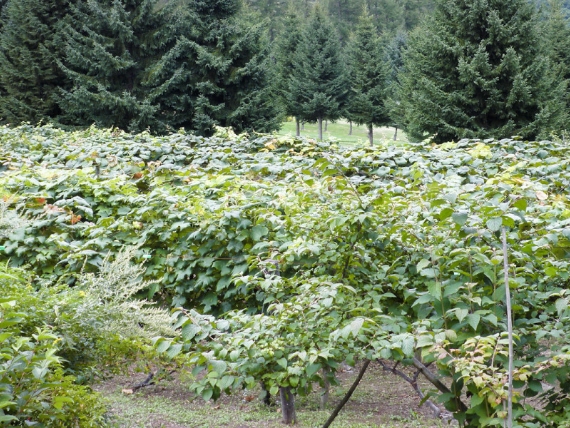
Sapporo Fujino Winery
Winery/Minami Ward
“Sapporo Fujino Winery” is located approximately 30 minutes from the center of Sapporo along Ishiyama Street. The winery uses grapes from its own vineyard as well as from other Hokkaido farms which grow grapes. They focus on making Sapporo produced wine that is unfiltered. Two sisters, Shizue Rubi and Tomoko Sato attend to the grapes with loving care. They began making grapes without using pesticide and creating wine that was good for the body. This was the wish of their late brother who loved wine. Since 2000, the sisters have been selecting a variety of grapes that fit the land and climate, and testing cultivation methods by trial and error. They now grow a wide selection of grapes and had 10 variety of wine for their 2014 lineup.
Fujino 670, Minami Ward, Sapporo
https://www.sapporo.travel/spot/facility/sapporo_fujino_winery/
-
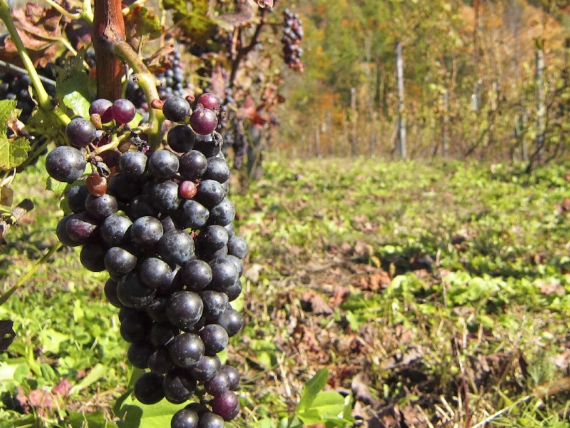
Hakkenzan Winery
Winery/Minami Ward
Hakkenzan Winery opened in 2011 at the foot of Mt. Hakkenzan. What stands out is the bright red building where they make wine in the midst of all the greenery and vineyard. “Wine is made in the field, the grapes want to be wine”as the motto, the winery produces 6 types of wine. As part of its commitment to conserving the environment, they also plant trees on their property. They are actively researching way to process locally grown fruits in the local environment and with their findings, they produce and sell cider and fruit jam alongside wine. Visitors can enjoy the park gulf courses and horse riding clubs nearby and the Jouzankei Hot Springs about a 10 minutes ride by car, for a day full of activities.
Toyama 194-1, Minami Ward, Sapporo
- Publishing
- Sapporo City Council for the Promotion of Historical and Cultural Town Development
(The secretariat: Cultural Properties Division, Culture Department, Citizen’s Cultural Bureau, Sapporo City) - 10F Sapporo Clock Tower Building 2-chōme-1 Kita 1 Jōnishi, Chuo Ward, Sapporo,
- TEL 011-211-2312
- March 2021
Agency for Cultural Affairs of the Fiscal Year 2020
Grant for Cultural Resource Utilization Projects (Tourism Base Development Project) funding

